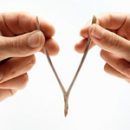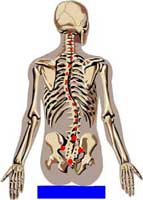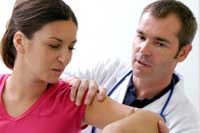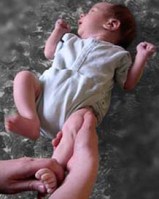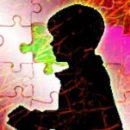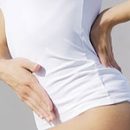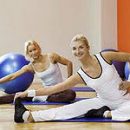One of the most common diseases of the musculoskeletal system in newborns - the dysplasia of the hip joint or congenital dislocation of the thigh. It occurs in 2-3 children from each 1000 newborns. Congenital dislocation of hips is more common in girls, hitting mainly the left hip joint.
Content
What is a hip dysplasia?
The hip dysplasia is a vice of the joint and all its elements. Depending on the degree of displacement of the head of the femoral bone in the gloomy depression, distinguish with dislocation, subsidiaries or prevents of the thigh.
The newborn, the formation of the joint has not yet been completed, so early diagnosis of the disease and the greatest start of treatment are important. Preventive inspection of the orthopedic and neurologist, as well as ultrasound examination of the joints, it is recommended to carry out every child, even if the parents did not have suspicions of deviations in development.
Now in the maternity hospital, each kid inspects a specialist, however, parents will not hurt to learn some of the most frequent symptoms of the hip joint dysplasia:
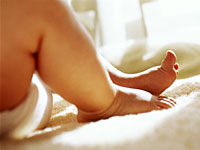 Restriction of the Passive Hipper. This feature can be checked so. Put the baby on your back, bend his legs in hip and knee joints at right angles and gently dug his hips on the sides. Passive lead is limited from the slander's damage. If a child «does not give» take the hint in the back position, it is easy to determine the restriction of movement in the position of the child on the belly when flexing the legs, as when crawling.
Restriction of the Passive Hipper. This feature can be checked so. Put the baby on your back, bend his legs in hip and knee joints at right angles and gently dug his hips on the sides. Passive lead is limited from the slander's damage. If a child «does not give» take the hint in the back position, it is easy to determine the restriction of movement in the position of the child on the belly when flexing the legs, as when crawling.
- Asymmetry folds on the hips and buttocks. Carefully appreciate the symmetry of the summits and folds on the bemps. To do this, put the baby on the stomach and straighten his legs.
- Outer rotation (outdoor rotation) hips and symptom of slipping (click). This feature is determined rarely.
- In the later dates of the diagnosis, the limb shortening, later the beginning of walking and «Duck» gait (smoothly overlapping).
The listed symptoms are not always pronounced.
Treatment of dysplasia
Treatment begins with the first days of the life of the baby. The functional method is widely applied, including treatment with the position (using various types of tires, wide swarenia), special massage, treatment gymnastics, supplemented by physiotherapy procedures.
The tire imposes an orthopedist, and parents must strictly fulfill his recommendations. If the tire treatment is not required, there is a wide swaddling: two pelleys are folded several times and lasted between the legs of the child, bent into the hip and knee joints and left to 60-80 degrees. In this position, the baby's leg is fixed by diapers, the third pelleton or pants.
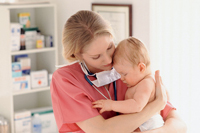 Such swaddling can be recommended to all children, since the optimal conditions for the proper development of the hip joint are created in the position of the feet.
Such swaddling can be recommended to all children, since the optimal conditions for the proper development of the hip joint are created in the position of the feet.
Wide swabs begin to apply in the maternity hospital during the first 3 months.
It is very important to hold the child properly on your hands. Adult supports the child with his hands behind his back, pressing him to him. Baby Widely placed legs «hugs» Adult torso.
It is not recommended to wear a baby «on horseback» on the side of the adult. At the same time, the position of the child is asmetry. You can use a backpack with a rigid back. But the daily long-term wearing of the baby in this position is undesirable, as it leads to a sustainable assignment of the front sections of the foot diver and their hug. In the position of the lying on the stomach feet of the baby should be outside the mattress (hang). This posture is the prevention of the thigh leading muscles.
Medical Physical Culture (LFC)
To restore children with congenital dislocation of the thigh, therapeutic physical culture is the main means of forming a healthy joint and the only means of maintaining the child's engine development. Tasks of the Flamm:
- Prevention and elimination of the thigh leading muscles;
- formation of hip joints, restoration of their form;
- strengthening muscles producing movement in hip joints (flexion, extension, discharge, rotation inside);
- development in full of active movements in the hip joints;
- Correction of the Valgus position of the knee and ankle joints arising from the treatment with tires.
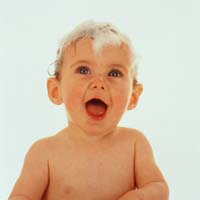 Exercise are general wealth and special. The first begin to use since the beginning of the child's life as reflex exercises, and as we grow up - given his psychomotor development. Special exercises contribute to the restoration of hip joints, muscles of the hips and buttocks. Taking into account the age of the child, passive (up to year) and active exercises are applied (from 1 to 3 years).
Exercise are general wealth and special. The first begin to use since the beginning of the child's life as reflex exercises, and as we grow up - given his psychomotor development. Special exercises contribute to the restoration of hip joints, muscles of the hips and buttocks. Taking into account the age of the child, passive (up to year) and active exercises are applied (from 1 to 3 years).
In the first year of life, as a rule, exercise are combined with massage. With congenital dislocation of hips, a classic massage is usually used with taking strokes, rubbing and easy kneading muscles of the lumbar region, buttocks, front, back and side surface of the hip and the soft spot massage of the berium muscles at the hip head in combination with the receptions of muscle relaxation, leading the thigh in motion. Warm baths, underwater massage, paraffin applications, mud.
With children older than 3 months, parents are engaged in medical gymnastics 3-5 times a day for 5-10 minutes. For children of preschool age to consolidate the results of treatment, and in some cases for fake, the healing gymnastics is not less than 3 times a week to 20-25 minutes using active exercise in the discharge position. Exemplary complex LG for preschool children (5-6 years).
The introductory part of the class (3-5 min.)
- Walking with the correction of the wrong stop setting.
Breathing exercises in walking or standing, with uniform load on both limbs.
Main part (15-20 min), initial position – Lying on the back
- Alternated bending - Stop extension (4-6 times).Alternated bending - extension of legs in the knee and hip joints (6-8 times).
- Answering and bringing a straight foot. Movement is performed without a support for the floor (4-6 times each foot). Sock on yourself, stop holds up vertically. Holy breathing.
- At the same time stretch out two hands up, heels down. Back to its original position and relax (3-4 times). Frower breathing (self-hyphenation).
- Alternately beat the feet suspended at an altitude of 40-50 cm ball, 4-6 times each foot.
- Feet bent, feet stand on the floor. Slow, smooth leg breeding to the sides and return back (4-6 times). Holy breathing.
- Methodist holds the feet of the child for ankle-free joint and performs a light vibration of the whole limb (3-4 times each leg). Can be performed on two limbs at the same time.
- Lying on a healthy side, take a straight foot to the side, go back (4-6 times).
- In the initial position lying on the stomach: strain and relax the jagged muscles, 6-8 times.
- Foot movement, as when crawling in Plastanski (4-6 times each foot).
- As in the UPR. 7, but beat the ball with a heel (4-6 times each foot).
- Easy tendering heels in the buttocks 4-6 times. Pause rest.
- Standing on all fours, remove the bent leg to the horizontal level (3-4 times each foot).
- A game.
Final part - 2-3 min.
- Walking, with alternate shocking legs.
- Standing, hands on the sides, squeeze - dismiss the fingers of the brush (3-4 times).

